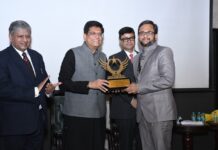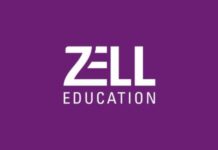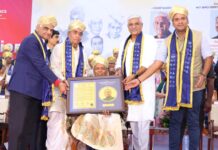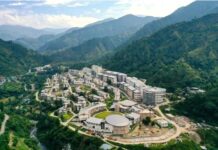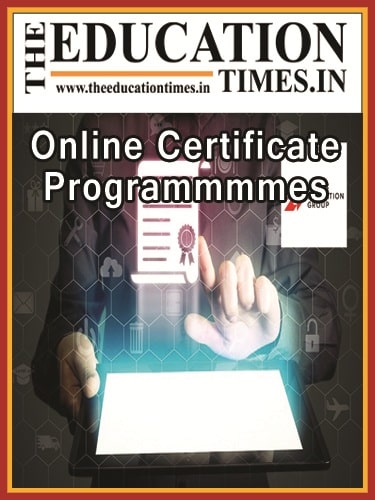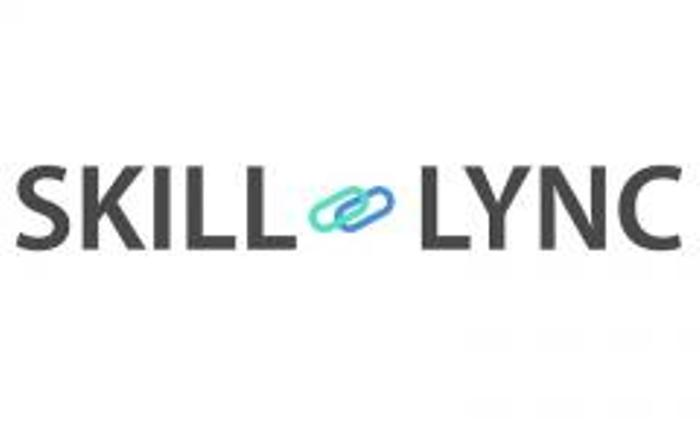By Dr MadhavSathe (M.D.D.A.Bom.) Consultant Anaesthesiologist Bombay hospital. Joint Honorary Secretary, The Bombay mothers and children welfare society, Mumbai. (Established 1919)
Ted talk link on rural education.
The ability to something notice or understand.
एखादीगोष्टसमजण्याचीकिंवाकाळजीपूर्वकपाहण्याचीक्षमता; संवेदनक्षमता, संवेदन, जाणीव
A particular way of looking at or understanding something; an opinion.
एखादीगोष्टसमजण्याचीविशिष्टतऱ्हाकिंवाएखाद्यागोष्टीकडेपाहण्याचाविशिष्टदृष्टिकोन; मत.
Introduction.
Education is a significant initiator of development at every other level of our life. In India education has reached to 96% of students within a radius of One KM. But as we all know the quality of education is very poor. Sufficient infrastructure and suitable environment stand as crucial factors for overall development of students. At a larger scale, it has been experienced and analysed that students from urban areas have good opportunities to learn many things at all stages of studentship. However, children from rural communities do not enjoy such an easy access to creative learning and opportunities to grow. Exploring one’s inner strength and capabilities through innovative efforts is the need of the hour in Education sector. Hence The Bombay mothers and children welfare society has decided to support education in rural schools with technology, curricular and co-curricular activities that would boost up the inner qualities and skills of students during their school period. India’s high youth population won’t be of help to the economy if universal education is not achieved all over India. (India Today, 2019). W . E-LEARNING is an initiative to provide accessible digital classrooms to the rural and tribal kids of Rajgurungar, Pune. This basic concept of static e-learning minus the support of internet connectivity took birth in 2013 in 72 schools initially. And we have now grown to 450 schools and plan to continue with this initiative on an ongoing basis. While we provide for the whole system required for the same, the villagers participate by contributing 15 percent of the total cost of the project amounting to INR 5000, voluntarily and also take responsibility of maintaining the system with minimal intervention from our organization. This process has been seamlessly working for the last 7 years. To deal with repeated power failures we initiated a proiject Solar Energy. Today 350 schools are using solar energy with roof top panels.
Problems in Rural Education and ‘ bottom up approach to solve them.
The pathetic condition of Rural education is Only 58% students in 4 th Standard can read 2nd standard book.
Figure 1Bottom up approach.
Perceived view from the Top of Pyramid View
Bad Infrastructure and Low Quality Teachers (you read it very often in newspapers.)
Infrastructure will prevent classes in rains but education can happen in rest of year. Teachers are graduate and found capable to teach.
Problems perceived from the bottom of the pyramid:
Absent students.
Lack of teaching aids.
Uneducated parents not interested in their child’s education
City centric curriculum with no relevance to rural areas
Agrarian country does not have any agriculture training is an unforgivable paradox
Demotivated teacher
How we changed our perceptions in reality.
Analysis.
It was a challenge to change the ground realities. I was in contact with many teachers. All of them were graduates and certainly were good to teach school children. They were demotivated by bad infrastructure and lack of teaching aids.
Children and parents were not interested in education. Parents never knew how education can change the future of the child. We had to choose the intervention strategies. Govt. Regulated curriculum could not be changed. Infrastructure development was beyond our budget. Changing Behaviour of parents was a long and arduous route with unpredictable outcomes. So convert the dry education into attractive audio visual was only option left.Now we were sure only technology can find a solution for improving pathetic education in rural India. I discussed this with friends working in IT industry. They all agreed that ICT(Information and Communication Technology) can be the only solution. But C –communication (Internet) was essential factor and that was totally missing. The discussion ended there but not our hope. We as a grassroot worker are of never say die by nature. We wanted a solution and we got it ultimately.
Innovation.
Teaching students how to become technologically adept is necessary for moulding them into twenty-first century thinkers. The creativity and innovation is involved in producing multimedia presentations not only teaches students but also help to develop important critical thinking and problem solving skills, which they can apply and find practical solutions. ForE Learning the communication mode is a necessary vehicle for transmitting ideas intelligently. As students of the past learned with slate boards and inkwells, students of the future will learn with computers and multimedia technologies’
India is credited with having the world’s second largest population and with more than 50% below 35 years of age, the country has the potential to become a hub of trained manpower provided this young population is given the right education and training. Education and institutions of learning are crucial both to creation of individual capabilities and also for country’s growth. Rural education in India is lagging far behind. Urban areas have been progressively improving to achieve some level of standard quality. But the aggressive investments required for improving the quality of education is hard to come in, especially for those institutes located in the interiors of India. Even urban government or local body schools are also not able to keep pace with urban private schools. Rural areas are completely deprived of quality education due to above mentioned reasons: Improve the quality of teachers with capacity building exercise is a distant dream and long term solution.. We, at The Bombay Mothers And Children Welfare Society were always aware about the ground realities. Hence we were constantly thinking of innovative solutions, which will not only improve the quality, but will also make it uniform and standardized irrespective of teacher’s quality & quantity. Also we wanted to devise a model that is easily scalable depending on the limited funds available. State-run education systems which represent the lion’s share of educational activity in India in both primary and higher education are in need of urgent reform and revitalization. Our sole aim was to bring in the quality education for rural children, to make them future ready in quick time. We feared a delay will deprive opportunities for a generation
We came across a perfect animated and digitised curriculum, which is fully based on the state board curriculum.
We thought this could be a perfect solution to the problem and could really change the perspective of rural education. The cost involved per school was also very reasonable and affordable. (Rs. 70,000/- or $1400/ in 2013 Today it is Rs. 30000 $400 only-) only. Considering the one time investment with no recurring cost this was an ideal tool to improve the rural education and to take it to a very different level. Hence we decided to start a pilot dream project in 8 schools (4 rural schools and 4 tribal schools).
In this way we have taken Interactive learning model to the rural India. Software based E-Learning is the use of technology to enable people to learn anytime and anywhere. It offers two major advantages for education and teaching. Firstly, it allows a scope of different media (text, pictures, graphs,
and audio files, movies) to present learning content to the students. Secondly, in connection with standard or special software the students may actively use such content which makes learning fun for them. We installed the hardware and software in just 3 days and program was on its path within no time. This easy to install technology was well accepted by teachers and students. Just a day’s workshop and school teachers were ready to take teaching to the higher levels in terms of quality & fun with the help of this new interactive mode of learning.
Interactive learning enhances the learning and teaching experience by the use of special communication tools and acts as an enabler for alternative training methods. It improves the quality of school education by overcoming factors like social background of students, different standards of teaching and teachers.
This software also has a science experiments and information to make small experimental models from waste material. Interactive learning had filled students with lots of enthusiasm, as interactive learning environment allows students to learn, not only from the teacher, but also from the other students in the classroom. Inspired with these experiments students are now very interested in an otherwise boring subjects for them. Full guidance on carrier is also a very useful informative part of this software. All courses and the addresses of universities make it easy for this otherwise ill-informed community and will open the gates for them.
We are certainly very pleased with the progress as today we have transformed 450 ZP schools into digital schools., its unbelievable utility with a deep impact on rural population. We also thought to come up with an innovative participatory and sustainability of this programme. Village invests 15% of the project cost and accept Rs.10/-/ month/child as sustainability cost. which can generate enough funds for maintenance and up gradation This is affordable for rural people, but when pooled together it will help us to make this programme perpetual.Development of the students and rural area will become a continuous process. We have also trained 100 rural students in Hardware and networking so maintenance becomes easy. .Big corporate house like TATA helped us in giving a quality training absolutely free of cost. These trained boys certainly will help us to maintain hardware in their villages while setting up their own business.
In has really worked wonders for rural population and exceeded our own expectations with its far reaching impact on rural education. We are sure that we will be able to replicate this innovative interactive learning model.Today we have transformed 450 Govt. rural schools. This is unique low cost innovative, scalable and replicable program.
In dealing with rural teachers we are very soft and keep on motivating them all along. They work with paltry facilities available and some in really very difficult circumstances. We had kept their moral high to make them proactive. A pat on back make wonders.
This surely has helped teachers on all fronts. Improvedquality has improvedattention andinvolvement of students. Now education is interactive and participatory.
Solar Energy to increase the use of E Learning 450 schools. Another perceptive policy development
.We were regularly following e learning program. We realised that the usage was not uniform and optimal. Upon enquiring the reasons we realised that Electricity plays hide and seek in all villages. Many schools have disconnection problem as Govt.grants for bills are late. We decided to offer solar energy for every school with same trusted PPPP model. Now we have Solar Panels in 350 rural schools. Not only E learning use is maximised but schools are independent of Govt. grants with green energy
Innovative use of “Alexa” as Information Teacher. Rural kids are very shy. They do not communicate easily. But they talk with inanimate object ALEXA.Teacher has been using this as an information teacher. Students are very inquisitive and have many questions but none could answer that in schools. Now they could get answers to all those questions from Alexa. Students have improved communication skills and inquisitive minds gets smile when Alexa answers their questions.
Beautifully rapped in Mannequin this is an attraction even to villagers. We will be distributing it in 50 schools with internet reach.
Remote villages have no access to computers and computer teachers.
We developed a policy to counter this problem. We developed a computer van to provides computer training on wheels. We have a van with 6 computers & 6 smart phones. An Adivasi boy, Prashant Paradhi has been trained as a Computer Instructor cum Driver. He has been doing the rounds in the villages and have trained 3,600 tribal kids since the last 4 years. Adiwasi boy as a trainer helped to cut the language barrier. Children identify with him very well and are eagerly awaiting his arrival. A special curriculum has been developed by our rural computer lab teachers. They understand these boys and their difficulties. Our first aim is to take away fear of wandering mouse cursor. This is best done by teaching them to draw and fill colours.
Education is only way for Main streaming of tribal population.
It is widely accepted across the nations that community participation in education brings positive results. It has more logic and meaning in the case of marginalised community like tribes in India. By and large tribal areas are the most remote in India. The population in those areas are scattered in small communities dependent on daily wages in nearby area. On an average they walk 4-5 Kms for their daily work. They are not the most neglected community, all development policies & reforms very rarely percolate to these areas. This population lot is politically irrelevant, extremely poor and hardly has access to education. Education will also determine their prosperity, success and security in life. The tribes which remain either deprived of or negligent toward education will suffer the consequence. Unless exploitation among the tribes is combatted and eliminated through education, no improvement in tribal welfare will occur. Within tribal areas, education can be the basis for integrated development.
The schools and their surroundings shape the minds of the children who frequent them. Most tribal schools do not blend well into the tribal environment. They are alien and often ugly structures in tribal villages. Shortly after schools are opened, they acquire the look of neglected and dilapidated buildings. Even after tribal youths’ educations are completed and they find employment, negative attitudes fostered in the classroom remain a real social hurdle. Unacceptable circumstances lead towards the apathy towards education amongst all – parents and children. Teachers have to go house hunting to get students in schools. In spite of having few very proactive teachers’ education never has been a priority for the tribal population.
We identified and renovated 5 such schools in our work area and renovated and refurbished it. Now schools are habitable for all seasons. Painted it with colourful & pasted relevant charts on the exteriors of the schools, installed computer with inverters. Created a CD library of panchatantra, Isop fables,
With the recent technological developments, an opportunity has emerged to introduce more efficient instruction into the classroom. The traditional blackboard approach is gradually giving way to more interaction between the instructor and students. Multimedia can be defined to be multiple forms of media (text, graphics, images, animation, audio and video) that work together. It is unparalleled in its ability to disseminate information quickly and accurately. Before the digital era, multimedia was delivered using one-way communication technologies such as books, magazines, radio, and television. The invention of the personal computer and the Internet, however, has introduced interactivity and created an engaging learning enviroronment.
Literature on learning and technology contains evidence that multimedia has the potential to transform every aspect of academic endeavour from instruction and learning to research and dissemination of knowledge. It can promote independent and cooperative learning, and improve performance of low achievers and special student populations, while heightening interest in learning, writing, and Rural india is a deprived of almost all the benefits as given to urban population. The basics are not in place even in near. Urban villages . Areas which are remote are unbelievably deprived. Tribal areas are beyond imagination.
For many years these people are living in very unhygienic conditions without basic amenities for healthy survival. Education is not the priority .has percolated in some parts and absent in some.
Education that makes youth career ready and makes them confident enough to take on any challenge in life defines the quality of education imparted to them. Education is one of the important pillars of socio-economic development of the country. Hence we firmly believe the growth of individual and the country as whole depends on the education system and quality teaching it imparts. We firmly believe in this hence our aim is to impart education to every possible hook and corner of India, especially to the interiors – rural and tribal areas, as they are the most neglected lots. For a country to be could as developed all people must be civilized, the first step to make it possible is education, so that it eradicates the ignorance of people, leading towards development.
We did a problem analysis and came to a conclusion that easiest and quickest way was to introduce the technologyin education. We got the software which was prepared as per the curriculum of the state board and this was animated to make it more interesting. This is made for self-learning but that was a impossible target as resources were limited.
We thought that if we use this as READYMADE BLACKBOARD then this will help teachers a great deal by 1) curriculum projected on screen 2) Gives a readymade blackboard with animation. 3).Teachers can explain subject better with animation and relevant clips. 4).Teachers have full attention towards class as never have to write on blackboard. 5) Get more time to explain the subject. 6). AUDEO VISUAL IMPACT Students improve concentration on the visuals and can grasp better. 7)Involvement of teachers is maximised due to responsive classroom. 8). Drab and dry methods of teaching were repulsive for many back benchers. 9.) Almost all of them are now interested in learning.10).Participatory education is more beneficial for both teachers and students.
Discussion.
Educational transformation– majority of Indian population stays in rural area. Agrarian community has now started educating their children for better pastures. We need to transform rural kids and get them in the 21 stcentury mould. We have to think innovative to bridge the gap in rural and urban education.Use of conventional methods it will never happen. Use of technology only can have the potential to lift the platform by scales, which are distant dreams at present. Education can be qualitative, imaginativeand participatory and thought generating with the use of technology. It can be very interesting as compared to a drab and boring education of today.
Use of technology can give a uniform quality across the country.Deficiencies in teachers skills can be covered to a great extent by supportive animated curriculum. This makes it easy for teachers to explain the complex concept.
Live experiments on screen makes science a interesting subject and will transform the concepts. This can lead to research percolating to a grassrootslevel and can be more practical and pragmatic along with affordable costing.
Social transformationuneducated, unaware community is living the life as given by GOD. They always think that they are BORN DIFFERENT and can never be as city people. Education is at present a compulsion and not choice for many. Use of technology has generated a tremendous interest in their minds and have transformed their mind-set.. Children now do not want to miss schools. Their confidence levels are very high and are now keen on learning.
Parents have started thinking about the future of their educated child and so are involved with them. Want to explore the avenues and have become hungry to seek information.
Now they have started thinking of supportive income generation to support child’s aspirations This thinking has given a boost for vocational programme. The society is transforming rapidly.Tribals are now wanting to join the band wagon and are promoting children to go to school. Dramatic change in attitude of parents and children in tribal areas in just 6 months is amazing and unbelievable.
Community Involvement:
Active community involvement is the only way to assure the project success. We understand it completely. With our community involvement we have developed an excellent rapport with them.
We do not create infrastructure. We only renovate if necessary. We upgrade the skills of existing teachers and support it with value addition. We take in confidence the school management and require their active participation in programme.
we have provided an additional software onEnglishspeaking, science experiment from waste material, and career guidance information with all relevant addresses and other related information. We promote the teachers to use it after schools hours to stimulate young minds. Response is very encouraging and science experiments have caught the student’s imagination and we holdexhibition of these articles every year for last 6years.This certainly will help develop local and hyper local entrepreneurships.
Teacher’s greatest satisfaction comes from their student’s success. This becomes a drive for proactive teachers and there active mode produce unbelievable results.
Involvment of community is very important as their feedback and suggestions gives a reality check. Their participation can make the programme sustainable.
They all agreed to contribute 15% of project cost and pay Rs.10/M/Child as sustenance charge to take care of the future needs of the project like 1)up gradation of software.2) Upkeep of equipment. The programme becomes self-sustaining once installed.
This is a beauty of the low cost ,self-sustaining programme which has shown the potential of revolutionising the rural education.
We believe in maximising the money we invest in projects.Monitoring has to be strong for every investment.
We get 1) regular report of the use of programme in detail every week.2) we have evaluated it with a) feedback forms from teachers and students.b) interview with teachers and school principles.3) parents interview.
Documentation of all feedback forms is an ongoing process and will continue.
Evaluation will be thrufeedback forms, exam results, attendance in tribal areas and many more parameters.
Our team visits every village once a week .there is a social worker who visits the school and takes review of all programmes every week. He motivates the community and staff for working on mutually beneficial schemes.
Scalability and Dissemination:
Concept of readymade blackboard is old and used in many developed countries effectively.
Curriculums are available readily in all languages but are used as self-learning.
We have used the same curriculum and projected it on screen to create ready blackboard facilitating the teaching and reducing the gap in urban and rural teachingdivide.
With this innovative concept the education has achieved different height and can be scaled all across country.
Easy availability of curriculum in all regional languages, low investment and low maintenance is going to make it very easy.
Conclusion
E learning and solar in 450 schools have changed the landscape of rural education in Rajgurunagartaluka of Pune District, Maharashtra state.
Public Private Partnership is a well-established entity in which the private party provides a public service or project and assumes substantial financial, technical and operational risk in the project. There are usually two fundamental drivers for PPPs. Firstly, PPPs are claimed to enable the public sector to harness the expertise and efficiencies that the private sector can bring to the delivery of certain facilities and services traditionally procured and delivered by the public sector. Secondly, a PPP is structured so that the public sector body seeking to make a capital investment does not incur any borrowing. On similar lines the Government, Social entrepreneurs and NGO’s can come together and work on building a strong Public Philanthropic partnership model. This model works to connect government and philanthropic resources in order to create bigger, better solutions to social problems. Philanthropy can, and should, be a key player alongside the public and private sectors to help the nation accelerate the pace of its response to emerging challenges.
PPP CAN BE SCALED DOWN TO PUBLIC PERSONAL PARTNERSHIP AND ALLOW INDIVIDUALS TO PARTICIPATE IN NATION BUILDING
Today Our PPP model has been transformed into
Participatory –Public-Philanthropy-Person model so PPP model and by modest fee this has become SUSTAINABLE PPPP model.
So we have found it a great tool to deliver quality education in all the schools.It gives a uniform platform by percolating uniform and improved delivery of quality education in all schools
Audio Visual impact is very palpable in the schools now.. It has attracted students’ attention. 100% attendance is the norm now.
ASER report says that 50% of 5 th Std. Students cannot read 2ndStd books. This is not trueanymore in Rajgurunagar. It is reversed completely. 2nd Std. can read 4 thstd books.
Active community involvement is the only way to assure the project success. We understand it completely. With our community involvement (Rs. 5000/-as participatory fee. And Rs10/- pm per student has made it sustainable. We have developed an excellent sustainable model.
Behaviour change – Parental involvement in child education is very important in early childhood education. We could achieve that by different ways!!!! Educating children and their changed attitude made parents rethink about education and its advantages.
Education is at present a compulsion.. Use of technology has generated a tremendous interest in their minds and has changed their thinking. Children now do not want to miss schools. Their confidence levels are very high and are now keen on learning.
Evaluation We have done evaluation with help of Pratham organization 1000 students,500 with and 500without E Learning.
Monitored usage makes teachers use it regularly
We have assessed the impact for seven years in 450 schools.
Indirect way by-Demand Generation.
Direct way byOral and written exams.
With advancing technology now the cost of E-Learning has reduced to Rs.30000/- only.
With the discussion above we do feel that this is a low cost innovative model to improve rural education








